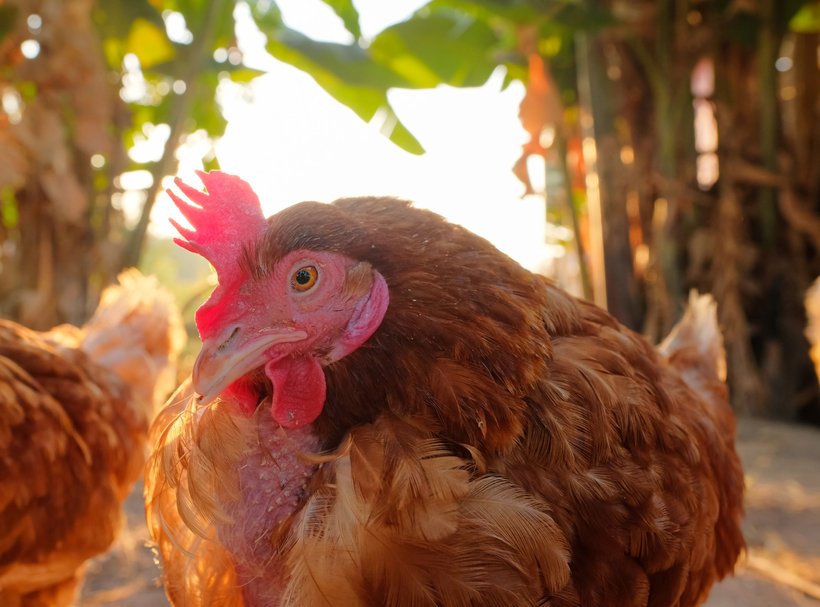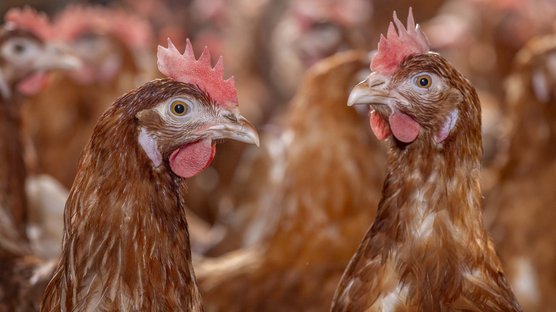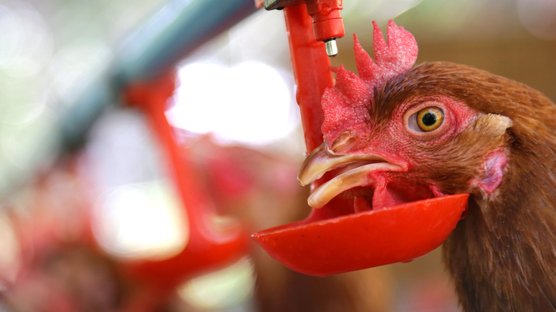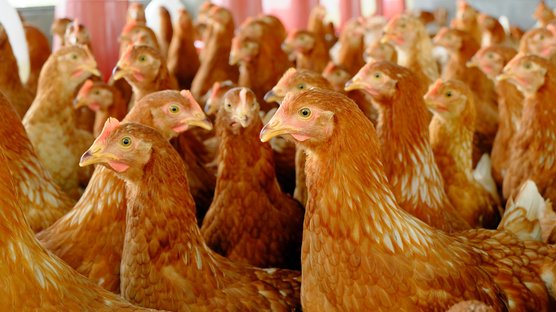
Published on Oct. 1, 2021
The control of Mycoplasma in laying hens
Although many species of mycoplasma can infect laying hens, only Mycoplasma gallisepticum (MG) and Mycoplasma synoviae (MS) are really pathogenic for chickens. The economic losses caused by such infections are variable and depend on the type of mycoplasma involved and its tropism for certain organs (respiratory, locomotor, genital). In addition, the clinical signs observed may be aggravated in case of intercurrent contamination with other pathogens such as respiratory viruses (Newcastle, infectious bronchitis, infectious rhinotracheitis...) or bacteria (Pasteurella, coli...). A bad climate inside the barns, stressful situations or feed related problems can also be aggravating factors.
Transmission
Mycoplasma is relatively fragile but can persist for a few days in the environment. Transmission of mycoplasma can occur vertically from infected parent stock or horizontally by contact of poultry with infected birds or equipment, or by airborne transmission from other infected flocks in the vicinity or by spreading manure from infected flocks.
Clinical signs
MG infection is responsible for what is commonly referred to as chronic respiratory disease or CID. Clinical signs include dyspnea, coughing, rales, vomiting and prostration. Growth delays are also observed during the rearing period with heterogeneous batches. In laying flocks, a decrease in production performance can be observed.
Infection with MS may result in a weak clinical expression. However, some bird dejection, pale crests, swollen joints and growth retardation may be observed in rearing.
In some cases, the strain of MS can have a marked genital tropism and be the cause of a degradation of the shell quality (rough eggshells), which can affect up to 15 to 20% of the production. The economic losses can thus be very important if the affected eggs cannot be valorized. It has also been shown that the rate of abnormal eggs produced increases when infectious bronchitis is present in a batch of eggs contaminated with MS.
In addition, bacterial complications are often observed in contaminated flocks, in particular colibacillosis, which causes peritonitis.
Mycoplasma surveillance
The knowledge of the status of the herds is necessarily based on laboratory tests. The choice of test and the frequency of testing will depend on the pressure to know the status of the herd.
The following can be performed:
- Serological tests: LRA, ELISA or IHA. These are rapid and inexpensive techniques, but there is a time lag between the contamination of the batch and the positivity of the tests since they are based on an antibody test.
- Mycoplasma detection tests: culture and PCR. These techniques are earlier in detecting the positivity of a batch, but are more expensive than serology and require heavier equipment.
Mycoplasma control
Antibiotics have long been used to control mycoplasma with treatments aimed at limiting the clinical signs of mycoplasmosis. However, treatments with antibiotics do not eliminate mycoplasma and animals will be carriers for life. Some egg producers practice sequential preventive treatments on their flocks, but this is not recommended as it may result in the selection of resistant bacteria in the herd.
Mycoplasma control is primarily a matter of good biosecurity to prevent the introduction of mycoplasma into an egg farm free of mycoplasma. The implementation of strict biosecurity rules, understood by the farm personnel, is essential.
This includes in particular
- Controlling access to the farm: parking areas away from the buildings.
- The implementation of a sanitary lock: change of clothes and hand washing, wearing of masks.
- Prohibition for the breeding staff to keep birds at home.
- Pest control: active rodent control and especially the installation of nets to prevent wild birds from entering the barns.
- Disinfection of all equipment entering the farm.
- A farm operation in all-full-vacuum.
- Physical separation of genetic levels (Parent Stock, commercial flock), the different ages (all-in all-out approach).
This biosecurity can be complemented by the introduction of mycoplasma vaccinations in the vaccination program. There are several vaccines on the market that give good results.



